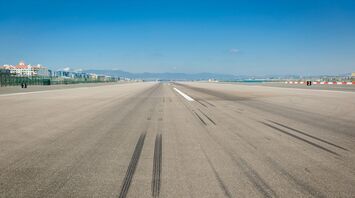Circular Runways: A Revolutionary Concept in Aviation Design

As air travel continues to evolve, so too does the infrastructure that supports it. One of the most fascinating ideas to emerge in recent years is the concept of circular runways. While traditional airports rely on straight, linear runways, this innovative design envisions a circular runway capable of handling multiple aircraft simultaneously, potentially transforming how airports operate. Although still in the conceptual stage, circular runways have garnered attention for their promise to increase efficiency, reduce noise pollution, and optimize space at busy airports.
The Vision Behind Circular Runways
The idea of circular runways was first proposed by Dutch engineer Henk Hesselink, whose design aims to address several key limitations of conventional airport layouts. In traditional systems, runways are often positioned to face prevailing winds, but this alignment can cause delays or even require closures during adverse weather conditions. Circular runways, by contrast, eliminate the need for such alignments as aircraft can take off and land in any direction. This flexibility allows pilots to adjust to the wind on the fly, ensuring smoother and safer operations.
The proposed circular runway, which could span up to 3.5 kilometers in diameter, would form a continuous loop, enabling several aircraft to land and take off simultaneously at different points along the circle. This could significantly reduce congestion at airports, particularly during peak travel times, where runway bottlenecks often cause delays.
Efficiency and Space Optimization
One of the key benefits of circular runways is the potential for maximizing the use of available space. In the current system, airports require large tracts of land to accommodate multiple straight runways, taxiways, and terminal buildings. Circular runways, however, could streamline these layouts, allowing for a more compact airport design. By eliminating the need for multiple parallel runways, airports could reduce the amount of land required while still supporting a high volume of air traffic.
Additionally, the continuous loop design could increase efficiency by enabling aircraft to take the shortest possible path to their destination. As planes could enter and exit the runway from various angles, the time spent taxiing could be reduced, resulting in less fuel consumption and lower emissions. This could prove particularly beneficial for airports with limited land resources, where expanding in size is not an option.
Environmental and Noise Reduction Benefits
Another significant advantage of circular runways is their potential to mitigate environmental and noise concerns. Traditional runways often force planes to follow specific flight paths over populated areas, leading to increased noise pollution for nearby residents. With a circular runway, aircraft could take off and land from any point on the loop, allowing flight paths to be dispersed over a wider area, thus reducing the impact on specific neighborhoods.
Furthermore, because pilots can align with the wind during both takeoff and landing, planes would require less engine thrust, leading to quieter operations. Reduced fuel consumption and fewer emissions are additional environmental benefits, aligning with the aviation industry’s ongoing efforts to adopt more sustainable practices.
The Challenges and Feasibility of Circular Runways
Despite the intriguing possibilities, implementing circular runways would pose significant challenges. One of the primary obstacles is pilot training. Circular runways would require pilots to master a new approach to takeoffs and landings, potentially increasing the complexity of flight operations. While simulators could help train pilots for circular runway landings, it would take time and substantial resources to adapt to such a radical change.
Moreover, the infrastructure required to build a circular runway would involve considerable costs. Airports would need to completely redesign their layouts, which could be a significant barrier to widespread adoption. Questions about air traffic control and managing multiple aircraft on a continuous loop runway also remain, as current systems are built around the assumption of straight runways and predictable flight paths.
Looking Ahead: The Future of Circular Runways
While the concept of circular runways is still in its early stages, it represents a bold vision for the future of aviation. The potential benefits in terms of efficiency, environmental sustainability, and noise reduction make it an attractive idea, especially for airports facing land constraints or environmental regulations. However, the feasibility of implementing such a design on a global scale will depend on overcoming significant technical, financial, and regulatory hurdles.
As airports worldwide grapple with increasing passenger numbers and limited space for expansion, circular runways offer a glimpse of what the future of air travel infrastructure could look like. While it may be some time before we see the first circular runway in operation, ongoing research and technological advancements may eventually make this concept a reality, reshaping how we think about airport design and functionality.
In the meantime, circular runways remain a thought-provoking concept in the world of aviation, reminding us that even as we soar through the skies, the design of the runways beneath our wings continues to evolve.



















